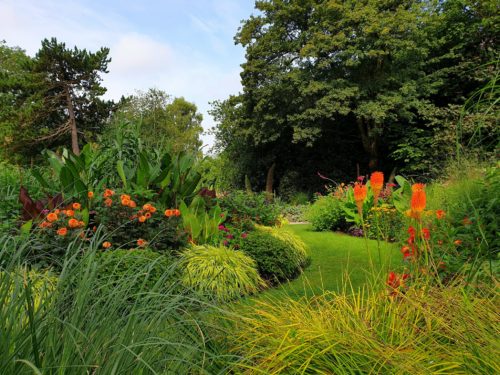We’ve missed welcoming and chatting to visitors these past few weeks, but we’ve had a couple of gardeners in every day to maintain the Gardens, ensuring that every inch is looking its best for when we can re-open.
We’ve been busily planting up the new Alan King Alpine Garden – we can’t wait to show you all what is looks like. We’ve planted about 1000 different species so far and there are more still to go in this month. All of the outcrops are planted with different phytogeographical regions, so one outcrop has plants you would find on the Alps, one contains all Turkish plants and so on.

The new Churcher Alpine House contains two new tufa rock cliffs, which are also being planted with multiple species. This new glasshouse complements the existing Hartley Alpine House, which is used for displaying potted alpine plants and through the winter months, our National Collection of Cyclamen.
The real showstopper for the gardens during May is the Rhododendron Walk. Our spectacular collection of rhododendrons creates a dazzling array of colour – and some of them here are well over 100 years old. If you are looking to add one to your garden, seek out the deciduous pink ‘Soir de Paris’, which has a beautiful fragrance.

This month, we’ll also be planting tender plants, such as cannas, gingers and salvias, into the centre of the grass garden. These plants have been overwintered in the nursery and some will initially need to be hardened off, so they get acclimatised to the outside. We’ll be placing them outside during the day before moving them back in at night, until there’s no longer a risk of night frosts.
We’ll also start to construct the spectacular cactus and other succulents display on the Loudon Terrace. It promises to be a real feat of engineering as some of the cacti are very heavy (and spiky!).

One of the most popular areas of the Gardens will be bursting into bloom towards the end of May: the rose garden. We’ve been lovingly tending the roses over the past few weeks and the amount of buds on them promise a spectacular show this year. Many of our roses are selected for fragrance and on some days the scent is quite intoxicating.
Keep an eye on our social media channels – Facebook and Twitter – so you can see what work we are doing during the lockdown.


